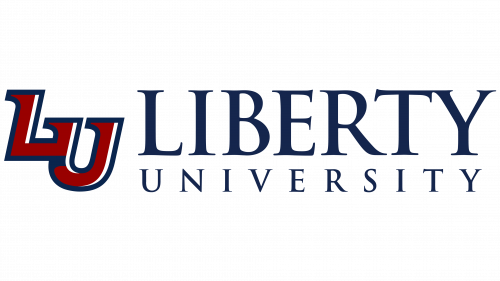The Liberty University logo is business-like. With it, it precisely conveys an attitude toward education, demanding and rigorous, with which the university approaches knowledge assessment. High expectations guarantee high results, which LU has already proven by being among the leaders in the number of students among Christian educational institutions.
Liberty University: Brand overview
| Founded: | 1971 |
| Founder: | Jerry Falwell Sr., Elmer L. Towns |
| Headquarters: | Lynchburg, Virginia, United States |
| Website: | liberty.edu |
Meaning and History
From its operation, the Baptist University LU preferred a business emblem. The strict and minimalist sign reflects a measured approach to education and high demands because a concise symbol must be impeccable. Otherwise, any flaws in it will be visible. And the designers made an effort. They painstakingly approached the logo’s concept, stylistics, and appearance, so it would make a worthy impression on those who want to get an education at a Christian university.
The key trend in Liberty University’s identity is seriousness. It became the foundation of its concept because this was the main requirement set before the developers. Business styling brought the name of the higher educational institution to the center of attention, so the academic emblem is textual. At the same time, the university-wide sign, besides the inscription, contains drawn elements.
What is Liberty University?
Liberty University (or LU) is a private higher educational institution from Lynchburg (USA). It belongs to the Southern Baptist Conservatives of Virginia and is among the largest Christian universities. Its time of emergence is 1971. Founders – Elmer L. Towns and Jerry Falwell Sr.
Before 2005
2005 – today
The textual logo has a two-level structure where each word occupies its line.
- The upper inscription is three times larger than the lower one. It uses bold, uppercase serif letters. Due to the specific structure, the last glyphs merge. Specifically, “T” and “Y” touch each other.
- The second line has smaller but distinct characters. This effect was achieved thanks to the wide distance between them. The letters here are thinner than in the first row but also bold.
Visually, the emphasis is on “Liberty,” highlighting the university’s name and its concept. Both parts of the inscription are aligned on both sides and colored in dark blue – one of the three official colors of Liberty University.
The Seal
The university seal symbolizes a commitment to education and God. It contains many legendary elements that have left a deep mark on the university’s history, including:
- A triangular heraldic shield (symbolizing the trinity, faith in Christ, and dedication to the Almighty);
- A bell (a copy of the real attribute located under the dome of the tallest building on the main campus);
- A bonfire (fire represents burning knowledge and the light of the Gospel that students bring to the world);
- A book (representing the Bible, considered the heart of the university and a key part of the logo);
- An octagon (the basic architectural style of the first university building);
- A tower (this is the Freedom Tower – a landmark of Liberty University, firmly standing on the Bible and forming a cross at the intersection with the year of foundation);
- Branches with leaves (stylization of a laurel wreath, given in Ancient Greece to outstanding individuals and winners).
At the top is the university’s name, set in a classic Roman typeface. Thin serifs complement semi-bold letters. The LU seal is used in very important ceremonies and by the top administrative echelon: the president, rector, and department heads, and also when awarding diplomas.
Font and Colors
The logo and seal contain inscriptions set in uppercase. It has a strict style and sharp serifs. According to university information, this is Trajan Pro. Both symbols are colored in the official colors of Liberty University: blue (main), red, and white.








